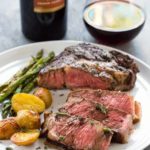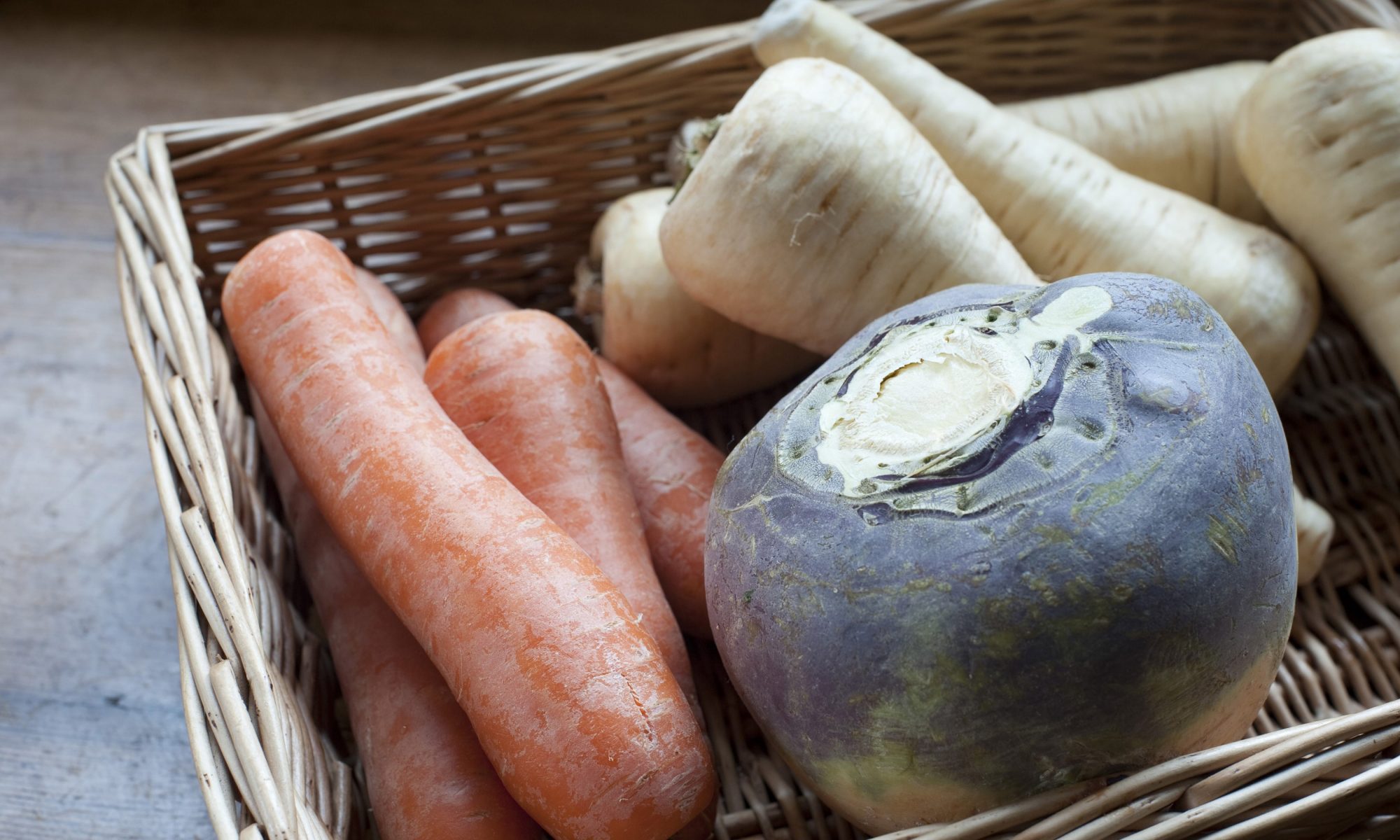
Bistro Seared Steak
2022-02-14 20:21:43

Recommended by Josh Lewi and Harry Mateer
Print
Nutrition Facts
Serving Size
0g
Amount Per Serving
Calories 0
Calories from Fat 0
% Daily Value *
Total Fat 0g
0%
Saturated Fat 0g
0%
Trans Fat 0g
Polyunsaturated Fat 0g
Monounsaturated Fat 0g
Cholesterol 0mg
0%
Sodium 0mg
0%
Total Carbohydrates 0g
0%
Dietary Fiber 0g
0%
Sugars 0g
Protein 0g
Vitamin A
0%
Vitamin C
0%
Calcium
0%
Iron
0%
* Percent Daily Values are based on a 2,000 calorie diet. Your Daily Values may be higher or lower depending on your calorie needs.
Ingredients
- 8-10 oz filet mignon, 1-1/2-2 inches thick OR NY strip steak
- 2TB butter (high-fat unsalted European)
- Kosher salt
- Coarse ground pepper
- 1TB Neutral oil (canola or rapeseed)
Instructions
- Allow steak and butter to come to room temperature at least 1 hour before cooking. Just before you’re ready to cook, heat oven to 450 degrees.
- Coat steak all over with 1 teaspoon flaky salt and a generous quantity of coarsely ground black pepper. Set a 12-inch ovenproof skillet over high heat until it gently smokes, about 5 minutes. Coat pan with 1 tablespoon neutral oil such as canola.
- Transfer skillet to center rack in oven. For rare meat, cook 4 minutes. For medium-rare, cook until juices bead on surface, 6 minutes. Bear in mind, steak will continue to cook on the stovetop, so here you want to stop slightly short of done to your liking.
- Return skillet to stove. Off heat, add butter, 1 sprig rosemary, 1 sprig thyme and 1 clove garlic, bruised with the flat of a knife. Tip pan toward you and spoon hot butter over steak, lifting occasionally so butter coats bottom of meat, about 1½ minutes.
- Transfer steak to a plate along with pan juices. Cover plate with foil, and let steak rest 10 minutes before eating, to allow time for juices to redistribute through meat. Serve immediately with french fries and a glass of red wine.
Notes
- Bifteck pôelé au beurre—steak pan-seared in butter, the type that usually graces a plate of steak frites—originated in restaurant kitchens but is just as easily (and in France, just as often) made by home cooks. It involves a few straightforward steps: An iron skillet heats until wisps of smoke appear. A thick steak sears until it develops a toothsome crust. After a brief sojourn in the oven, it returns to the stovetop to be finished with melted, herb-flavored butter.
- “This allows the full flavor to shine. Otherwise you are not doing justice to the meat,” said Mr. Desnoyer.
- Unlike many staple French techniques, this one isn’t dependent on precision—though its steps are rooted in culinary science. The high-heat searing encourages the Maillard reaction, by which a food’s amino acids and sugars caramelize to create a savory golden crust. The sizzling butter spooned over the steak undergoes the same reaction, further heightening the flavor as well as lending richness.
- Could it really be as easy as Mr. Desnoyer made it sound? There was only one way to find out. The first step was choosing a cut; I decided on a grass-fed filet mignon. I made sure I had on hand a European-style butter, with a higher butterfat content that prevents it from browning as fast as typical American-style butters do. I readied my mise-en-place, including tongs, for as Mr. Desnoyer had explained, piercing the meat with a fork allows valuable juice to escape.
- I heated the skillet a full five minutes as directed, recalling the master butcher’s parting words: “It’s not complicated. Just one thing is essential: You must resist the temptation to turn the steak until it has cooked for two full minutes. It will be worth the wait, I promise you.”
- And reader, it was—juicy, precisely medium-rare, full of primal savor and as deliciously French as any I’d ever eaten.
NoMayo https://nomayo.us/
